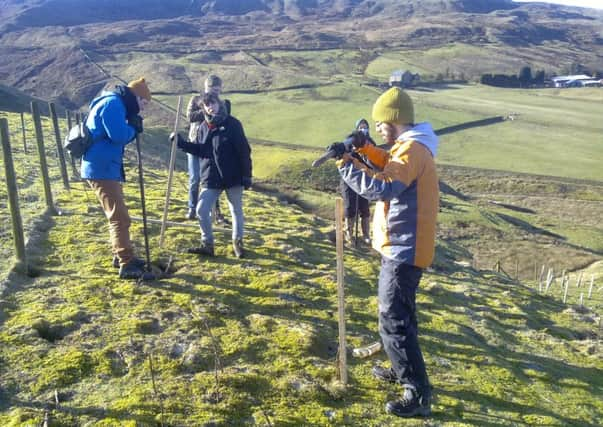Natural new flood defences take shape


Willow, alder and birch thrive in poorly drained or seasonally flooded areas like fens and bogs, river banks and hillside flushes. According to the Yorkshire Wildlife Trust, these woods support a large number of plants, animals and funghi, and in particular beetles, many of which are rare in the UK.
Crucially, wet woodlands also help reduce flood risk elsewhere on river courses, by slowing down and storing water.
Advertisement
Hide AdAdvertisement
Hide AdThe Trust says this habitat has suffered in recent decades, through mass clearances and drainage for agriculture, urban development and intensive forestry practices. Its manager for the Aire and Calder region, Nick Simms says: “As highlighted with recent events across the country, the value of schemes like this are becoming more and more recognised. It’s about holding on to water in the environment for longer periods to avoid extreme situations like flooding or drought. Wet woodland is very good at storing floodwater. This means that when water levels rise, this habitat can help prevent it reaching our towns and villages.”
Between 2011 and 2013, the Trust created five new areas of wet woodland on sites owned by Kirklees Council, aided by funds from Biffa Award, Kirklees Council and the Environment Agency.
Mr Simms says: “Wet woodland has been identified as a priority habitat by the Strategic Waterways Group, which includes all the West Yorkshire councils. Five areas in and around Almondbury and Kirkburton were selected for wet woodland habitat creation. Over the two years of the project they were transformed from overgrazed pasture to wildlife-rich, wet woodland.”
Diggers started work in spring 2011, reshaping the land to slow and retain rainwater run-off by creating ponds and shallow pools known as ‘scrapes’. Volunteers then planted hundreds of young trees and shrubs. Mr Simms explains: “The newly planted trees intercept water flow and their root growth makes the soil more porous.
Advertisement
Hide AdAdvertisement
Hide Ad“Wildlife colonises wet areas quickly but it will take decades before our vision of mature wet woodland is realised. We hope local people will adopt and care for these sites long after the project’s ended.”
As part of the project, the Trust has expanded and improved existing wet woodlands such as Carr Wood near Farnley Tyas, Penny Spring Wood near Lowerhouses and Bradley Gate Wood, between Brackenhall and Bradley, all in Huddersfield. Elswhere, volunteers are planting trees and creating wetland areas in the upper Aire Valley in a four-year scheme funded by SITA Trust, supported by the Environment Agency and focussed on Steeton Ings in Silsden, Ryeloaf Meadows in Bingley, Marley near Keighley and two sites at Otterburn, near Gargrave.
Meanwhile, in the upper Calder Valley, a partnership of organisations which encourages tree planting and erosion management is using local woodland products to re-contour and strengthen vulnerable hillsides.
The Source, which includes Treesponsibility, the Environment Agency, the Calder and Colne Rivers Trust, Calderdale Council and the White Rose Forest, says some local sites have become eroded to the point that hardly any or no vegetation grows there.
Advertisement
Hide AdAdvertisement
Hide AdDongria Kondh of Treesponsibility says: “Over-grazing and heavy rains combined with exposed positions can leave bare scars on our hillsides that get worse with time, as more rain washes away the soil and scree. This has long term implications on flooding downstream as rain water accelerates down the bare hillside and rivers fill with debris.’
As well planting thousands of trees, The Source has completed four erosion control sites using fascines, six-foot-long bundles of sticks and twigs, to fence sites off from deer and sheep and allow re-seeded plants to recolonise. Treesponbility holds regular volunteer days every Thursday, meeting at Hebden Bridge railway station at 9.30am.
Ms Kondh says: “We’ve a variety of jobs to do, so you could be helping with maintenance on our existing planted sites, preparation on upcoming sites or tree planting. There will be at least two of the Treesponsibility team on hand who will know exactly what to do and help you.”
For more details, see www.treesponsibility.com/contact-us/